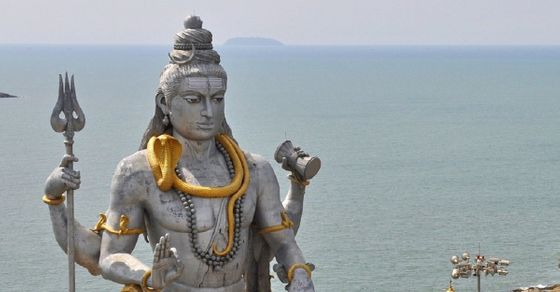Shivratri Vrat Vidhi | MahaShivratri Puja Vrat Vidhi 2021: Here’s everything about Shivratri and puja samagri list

Mahashivratri Vrat Vidhi 2021: All you need to know about the Vrat 
The traditional Hindu calendar is full of festivals and auspicious days dedicated to the many deities that devotees worship. One such significant day is known as Maha Shivratri or the biggest night dedicated to Lord Shiva. As the name suggests, the festival is dedicated to Lord Shiva, the one who is believed to be the constructive destroyer. Unless the old and the obsolete perish, nothing new can take birth, and hence, praying to Lord Shiva, helps a devotee in attaining Moksha.
On Maha Shivratri, devotees keep a fast and break it only on the next day. However, it is not an easy feat. It requires tremendous faith, conviction and will power to observe the fast and perform it the way it is meant.
How is the Vrat performed?
Devotees rise early and take a bath. And after wearing fresh and clean clothes, they do Dhyana (meditation) and subsequently invoke Lord Shiva to accept their humble prayers and offerings. Thus the fasting period begins. Devotees also visit temples to offer raw milk or water to the Shiva Linga while chanting “OM Namah Shivaya”.
Later during the evening, before the Puja Muhurta, devotees take a bath once again. The main puja rituals include the Abhishekam of the idol or the Shiva Linga with water, honey, ghee, milk and curd. After the Abhishekam, devotees use water once again to clean the idol and wipe it with a clean cloth. Subsequently, the following things are offered:
A fresh piece of cloth (preferably white)
Janeyu (sacred thread)
Chandan (sandalwood paste)
Vibhuti (sacred ash)
Bilva leaves
Datura flowers and fruit
The white crown flower or the Parijat or the yellow Kaner flowers
Dhoop (incense)
Deep (traditional oil lamp)
These items are offered to Lord Shiva with utmost devotion while chanting “OM Namah Shivaya”.
After performing the puja, the Arti is sung to hail the deity and seek his blessings. And later, one can break the fast.
Ideally, people do not consume wheat, rice, and pulses in any form. They stick to a fruit diet and milk. However, some consume vrat recipes such as sabudana khichdi or vada, kuttu or singhare ki puri or paratha, aloo jeera curry or sama ki khichdi.
Some devotees perform the Puja during Nishita Kaal or midnight, while the rest do a puja for four times during the four Prahars at night.
The Vrat is usually observed on Trayodashi Tithi depending on what time it starts. And the fast is broken on Chaturdashi. The Maha Shivratri puja is performed on the Chaturdashi Tithi during Krishna Paksha in the month of Magha (Amanta calendar) and Phalguna (Purnimant calendar). This year, Maha Shivratri will be celebrated on February 21.
Maha Shivratri puja 2021 timings are as follows:
Chaturdashi Tithi begins at 5:50 AM on February 21 and ends at 7:32 AM on February 22.
Nishita Kaal Puja (main puja) timings – 11:38 PM to 12:30 AM, February 22
Apart from the Nishita Kaal, one can perform puja during four Muhurtas, and they are as follows:
First Prahar – 5:31 PM to 8:47 PM
Second Prahar – 8:47 PM to 12:04 AM, February 22
Third Prahar – 12:04 AM to 03:20 AM, February 22
Fourth Prahar – 3:20 AM to 06:37 AM, February 22
Parana or time for breaking the fast – 6:37 AM to 7:32 AM, February 22
Please, share this post on Tumblr !

